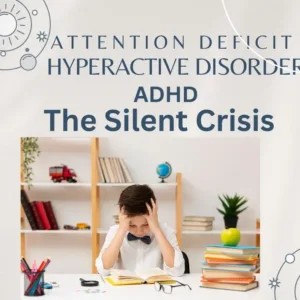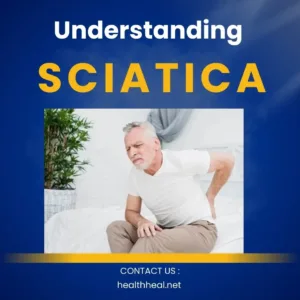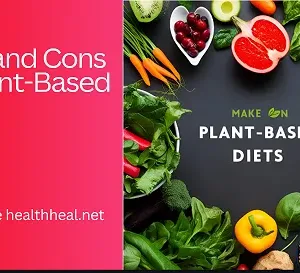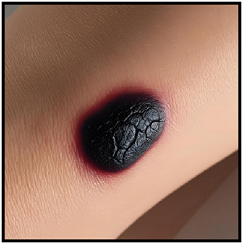Introduction
Cholecystitis is the inflammation of the gallbladder, a small organ located beneath the liver that stores bile—a digestive fluid. This condition often occurs due to gallstones blocking the cystic duct, leading to irritation and swelling. If left untreated, cholecystitis can cause serious complications, including gallbladder rupture or infection.
In this comprehensive guide, we’ll explore the risk factors, diagnosis, and management of cholecystitis, along with expert insights to help you understand this condition better.
Risk Factors
Cholecystitis (inflammation of the gallbladder) is often caused by gallstones, but several other factors can increase your risk. Understanding these risk factors can help with prevention and early detection.
1. Gallstones (Cholelithiasis)
- Primary Cause: Over 90% of cholecystitis cases occur due to gallstones blocking the cystic duct.
- Why It Happens: Gallstones trap bile, leading to pressure buildup, irritation, and infection.
2. Age & Gender
- Women at Higher Risk: Hormonal changes (especially estrogen) increase cholesterol in bile.
- Age Factor: People over 40 are more likely to develop gallstones.
3. Obesity & Rapid Weight Loss
- Obesity: Excess fat increases cholesterol levels in bile, leading to stone formation.
- Crash Diets: Rapid weight loss causes the liver to release extra cholesterol into bile.
📌 Reference: NIH Study on Obesity and Gallstones (external link)
4. Diabetes & Metabolic Syndrome
- Insulin Resistance: Increases cholesterol in bile.
- High Triglycerides: Linked to gallstone formation.
📌 Source: American Diabetes Association (external link)
5. Pregnancy
- Hormonal Shifts: Progesterone slows gallbladder emptying.
- Increased Risk: Especially in the third trimester.
6. Family History & Genetics
- Hereditary Factors: A family history of gallstones raises your risk.
- Ethnicity: Native Americans and Hispanics have higher susceptibility.
7. Sedentary Lifestyle
- Physical Inactivity: Slows digestion and gallbladder function.
📌 Tip: Best Exercises for Digestive Health (internal link)
8. Certain Medications
- Hormone Therapy (HRT): Increases cholesterol saturation in bile.
- Cholesterol-Lowering Drugs (e.g., fibrates): Can paradoxically raise gallstone risk.
9. Chronic Diseases
- Cirrhosis: Affects bile production.
- Crohn’s Disease: Reduces bile acid absorption.
📌 Medical Source: Mayo Clinic on Gallbladder Diseases
Key Takeaways
✅ Gallstones are the leading cause—blockages trigger inflammation.
✅ Women, older adults, and obese individuals are at higher risk.
✅ Lifestyle changes (diet, exercise) can significantly reduce risk.
Types of Cholecystitis
Cholecystitis can be classified based on cause, duration, and complications. The main types include:
1. Acute Cholecystitis
Definition: Sudden inflammation of the gallbladder, usually due to gallstone obstruction (calculous) or critical illness (acalculous).
A. Acute Calculous Cholecystitis (90% of cases)
- Cause: Gallstone obstructs the cystic duct → bile stasis → inflammation/infection.
- Symptoms:
- Severe RUQ pain, fever, nausea/vomiting.
- Murphy’s sign positive.
- Diagnosis:
- Ultrasound: Gallstones, thickened gallbladder wall (>3mm), pericholecystic fluid.
- Labs: ↑WBC, mild ↑AST/ALT/ALP.
- Treatment:
- IV antibiotics (e.g., ceftriaxone + metronidazole).
- Laparoscopic cholecystectomy (within 24-72 hours).
B. Acute Acalculous Cholecystitis (10% of cases)
- Cause: No gallstones; seen in critically ill patients (e.g., sepsis, trauma, burns, TPN use).
- Pathophysiology: Ischemia + bile stasis → inflammation.
- Symptoms:
- Often atypical (fever, vague abdominal pain).
- High mortality due to delayed diagnosis.
- Diagnosis:
- Ultrasound/HIDA scan (non-visualization of gallbladder).
- CT if complications suspected.
- Treatment:
- IV antibiotics + urgent cholecystostomy (if high-risk for surgery).
2. Chronic Cholecystitis
Definition: Long-standing gallbladder inflammation due to recurrent gallstone irritation.
- Symptoms:
- Intermittent RUQ pain (biliary colic).
- Indigestion, bloating, fatty food intolerance.
- No fever or leukocytosis (unless acute exacerbation).
- Diagnosis:
- Ultrasound: Gallstones, thickened/fibrotic gallbladder wall.
- HIDA scan (low ejection fraction = chronic dysfunction).
- Treatment:
- Elective cholecystectomy (if symptomatic).
3. Complicated Cholecystitis
A. Emphysematous Cholecystitis
- Cause: Gas-forming bacteria (e.g., Clostridium, E. coli) → gallbladder necrosis.
- Risk Factors: Diabetes, immunosuppression.
- Diagnosis:
- CT/X-ray: Air in gallbladder wall.
- Treatment:
- Emergency cholecystectomy + broad-spectrum antibiotics.
B. Gangrenous Cholecystitis
- Cause: Severe ischemia → gallbladder necrosis.
- Symptoms:
- Severe pain → sudden pain relief (nerve death).
- High fever, sepsis, shock.
- Diagnosis:
- CT/US: Irregular gallbladder wall, pericholecystic abscess.
- Treatment:
- Urgent cholecystectomy.
C. Empyema of the Gallbladder
- Cause: Pus-filled gallbladder due to bacterial infection.
- Symptoms:
- High fever, rigors, severe RUQ pain.
- Diagnosis:
- US/CT: Distended gallbladder with echogenic material (pus).
- Treatment:
- IV antibiotics + drainage (cholecystostomy) or cholecystectomy.
D. Perforated Gallbladder
- Cause: Necrosis → rupture → bile peritonitis.
- Symptoms:
- Sudden worsening pain → generalized peritonitis.
- Diagnosis:
- CT: Free fluid/air, discontinuous gallbladder wall.
- Treatment:
- Emergency surgery (cholecystectomy + peritoneal washout).
4. Special Forms
A. Mirizzi Syndrome
- Cause: Large gallstone compresses the common hepatic duct → obstructive jaundice.
- Symptoms:
- Pain + jaundice + fever (cholangitis).
- Diagnosis:
- MRCP/ERCP (shows extrinsic bile duct compression).
- Treatment:
- Surgical removal of stone ± biliary reconstruction.
B. Xanthogranulomatous Cholecystitis
- Rare chronic inflammation mimicking gallbladder cancer.
- Diagnosis:
- CT: Thickened gallbladder with hypodense nodules.
- Treatment:
- Cholecystectomy (difficult due to fibrosis).
Summary Table: Types of Cholecystitis
| Type | Cause | Key Features | Treatment |
|---|---|---|---|
| Acute Calculous | Gallstone obstruction | RUQ pain, fever, Murphy’s sign (+) | Lap cholecystectomy |
| Acute Acalculous | Critical illness | ICU patients, high mortality | Cholecystostomy |
| Chronic | Recurrent stones | Intermittent pain, no fever | Elective surgery |
| Gangrenous | Ischemia/necrosis | Sepsis, shock | Emergency surgery |
| Empyema | Pus-filled GB | High fever, rigors | Drainage + surgery |
| Emphysematous | Gas-forming infection | Air in GB wall (diabetes) | Emergency surgery |
Symptoms :
Cholecystitis (inflammation of the gallbladder) typically presents with a combination of localized abdominal pain, systemic signs of inflammation, and digestive symptoms. The symptoms can vary depending on whether the condition is acute or chronic, and whether it is calculous (gallstone-related) or acalculous (without stones).
1. Classic Symptoms
A. Pain
- Location: Right Upper Quadrant (RUQ) or epigastric region.
- Radiation: Often radiates to the right shoulder or scapula (due to phrenic nerve irritation).
- Character:
- Sudden onset (especially after a fatty meal).
- Persistent & severe (unlike biliary colic, which is intermittent).
- Worse with movement or deep breathing.
B. Nausea & Vomiting
- Present in 70-90% of cases.
- Often worsens after eating (especially fatty foods).
C. Fever & Chills
- Low-grade fever (common in uncomplicated cases).
- High fever (>38.5°C) suggests empyema, gangrenous cholecystitis, or cholangitis.
D. Anorexia (Loss of Appetite)
- Due to pain and nausea.
2. Additional Symptoms (Depending on Severity & Complications)
| Symptom | Possible Indication |
|---|---|
| Jaundice (yellow skin/eyes) | Common bile duct obstruction (choledocholithiasis) or Mirizzi syndrome. |
| Dark urine & pale stools | Obstructive jaundice (due to blocked bile flow). |
| Abdominal distension | Possible ileus or perforation. |
| Generalized peritonitis (severe, diffuse pain) | Gallbladder perforation (medical emergency). |
| Confusion & hypotension | Sepsis (emphysematous/gangrenous cholecystitis). |
3. Chronic Cholecystitis Symptoms
- Recurrent episodes of milder RUQ pain (lasting hours).
- Bloating, indigestion, fatty food intolerance.
- No fever or severe systemic symptoms (unlike acute cases).
4. Acalculous Cholecystitis Symptoms
- Seen in critically ill patients (e.g., ICU, burns, sepsis).
- Symptoms may be atypical:
- Unexplained fever.
- Vague abdominal pain.
- No clear history of gallstones.
Key Differences from Biliary Colic
| Feature | Biliary Colic | Acute Cholecystitis |
|---|---|---|
| Pain Duration | 30 min – 6 hrs | >6 hrs, persistent |
| Fever | Absent | Present |
| Murphy’s Sign | Negative | Positive |
| WBC Count | Normal | Elevated |
When to Seek Emergency Care?
- Severe, unrelenting RUQ pain.
- High fever + chills (suggests infection).
- Jaundice + dark urine (bile duct obstruction).
- Signs of sepsis (confusion, low BP, rapid HR).
Summary
- Classic Triad: RUQ pain + fever + nausea/vomiting.
- Murphy’s sign + leukocytosis strongly support the diagnosis.
- Jaundice suggests complications (e.g., choledocholithiasis).
Diagnosis: Tests and Procedures
Accurate diagnosis of cholecystitis is crucial for proper treatment. Doctors use a combination of physical exams, blood tests, and imaging studies to confirm gallbladder inflammation and rule out other conditions.
1. Physical Examination
- Murphy’s Sign:
- The doctor presses on your right upper abdomen while you take a deep breath.
- Positive sign: Sharp pain that makes you stop inhaling (indicative of cholecystitis).
- Tenderness & Swelling: The gallbladder area may feel firm or enlarged.
📌 Related Article: https://www.healthheal.net/acute-abdomen-the-silent-killer-lurking-in-gut/
2. Blood Tests
- Complete Blood Count (CBC):
- High white blood cells (WBCs): Indicates infection.
- Liver Function Tests (LFTs):
- Elevated bilirubin, ALT, AST, or alkaline phosphatase suggests bile duct blockage.
- C-reactive Protein (CRP) & ESR:
- Markers of inflammation.
📌 Reference: American Liver Foundation on Liver Tests
3. Imaging Tests
A. Abdominal Ultrasound
- First-line diagnostic tool (90% accuracy for gallstones).
- Detects:
- Gallstones
- Thickened gallbladder wall (>3mm suggests inflammation).
- Pericholecystic fluid (fluid around the gallbladder).
B. HIDA Scan (Cholescintigraphy)
- A radioactive tracer is injected to track bile flow.
- No gallbladder filling? = Cystic duct blockage (confirms cholecystitis).
📌 Source: RadiologyInfo on HIDA Scans
C. CT Scan or MRI
- Used if complications (abscess, perforation) are suspected.
- MRI/MRCP: Best for evaluating bile ducts.
4. Additional Tests (If Needed)
- Endoscopic Retrograde Cholangiopancreatography (ERCP):
- Checks for common bile duct stones.
- Can remove stones during the procedure.
- Percutaneous Cholecystostomy:
- Drains infected gallbladder fluid in high-risk patients.
📌 Medical Resource: NIH on ERCP Procedure
Differential Diagnosis
Cholecystitis can mimic other conditions, so doctors may rule out:
✔ Peptic ulcer disease
✔ Hepatitis
✔ Pancreatitis
✔ Kidney stones
Key Takeaways
🔹 Ultrasound is the gold standard for detecting gallstones.
🔹 HIDA scans confirm blocked ducts when ultrasound is inconclusive.
🔹 Blood tests help identify infection but aren’t definitive.
Management and Treatment :
Cholecystitis requires prompt treatment to relieve symptoms, prevent complications, and address the underlying cause. Treatment approaches depend on whether the condition is acute (sudden) or chronic (long-term).
1. Initial Emergency Treatment (Acute Cholecystitis)
A. Hospitalization & Supportive Care
- Fasting (NPO): Resting the gallbladder to reduce bile production.
- IV Fluids: Prevents dehydration.
- Pain Management:
- NSAIDs (e.g., ibuprofen) for mild pain.
- Opioids (e.g., morphine) for severe pain.
B. Antibiotics
- Given if infection is suspected (e.g., fever, high WBC count).
- Common choices:
- Ceftriaxone + Metronidazole
- Piperacillin-Tazobactam (for severe cases).
📌 Medical Reference: IDSA Guidelines on Intra-Abdominal Infections
2. Definitive Treatment: Surgery
A. Laparoscopic Cholecystectomy (Gold Standard)
- Minimally invasive (3-4 small incisions).
- Recovery time: 1-2 weeks.
- Success rate: >95%.
B. Open Cholecystectomy
- Used in complicated cases (e.g., gangrene, perforation).
- Recovery time: 4-6 weeks.
📌 Surgical Resource: American College of Surgeons on Gallbladder Removal
C. Percutaneous Cholecystostomy (Temporary Drainage)
- For high-risk patients (e.g., elderly, critically ill).
- A tube drains infected bile until surgery is safe.
📌 Study Reference: NIH on Cholecystostomy Outcomes
3. Non-Surgical Options (For Select Patients)
A. Oral Bile Acid Dissolution Therapy
- Ursodeoxycholic acid (UDCA) may shrink small cholesterol stones.
- Limitations: Slow (months to years), works only for tiny stones.
B. Lifestyle & Dietary Changes
- Low-fat diet: Reduces gallbladder contractions.
- Gradual weight loss: Avoids rapid fat mobilization.
- High fiber: Helps regulate bile production.
4. Managing Chronic Cholecystitis
- Symptom control: Avoid fatty foods, use antispasmodics (e.g., hyoscyamine).
- Elective surgery: Recommended to prevent future attacks.
Complications & When to Seek Help
🚨 Warning Signs:
- High fever, jaundice, severe abdominal swelling.
- May indicate empyema, gangrene, or pancreatitis.
Key Takeaways
✅ Surgery (laparoscopic cholecystectomy) is the definitive cure.
✅ Antibiotics + pain control stabilize acute cases before surgery.
✅ Diet changes help manage symptoms pre- and post-op.
Gallbladder – Friendly Meal Plan:
Here’s a visual-friendly, gallbladder-friendly meal plan with detailed plate breakdowns to prevent flare-ups and support digestion:
🌞 Breakfast: Anti-Inflammatory Oatmeal Bowl
Plate Composition:
✅ ½ cup rolled oats (cooked in water or almond milk) – high fiber
✅ 1 tbsp chia seeds – omega-3s reduce inflammation
✅ ½ cup blueberries – antioxidants
✅ 1 tsp honey (optional) – low-sugar sweetener
🚫 Avoid: Butter, cream, or excessive nuts
📌 Why It Works: Gentle fiber + antioxidants won’t trigger gallbladder contractions.
🌿 Lunch: Lean Protein & Veggie Power Plate
Plate Composition:
✅ 3 oz grilled chicken or tofu – lean protein
✅ 1 cup steamed carrots/zucchini – easy-to-digest veggies
✅ ½ cup quinoa or brown rice – fiber-rich complex carbs
✅ 1 tsp olive oil drizzle – healthy fat in moderation
🚫 Avoid: Fried foods, cheese, or creamy dressings
📌 Pro Tip: Bake or steam instead of frying to reduce fat content.
🥗 Snack: Soothing Ginger-Apple Combo
Plate Composition:
✅ 1 small apple (sliced) – soluble fiber
✅ 1 cup herbal tea (ginger or peppermint) – aids digestion
🚫 Avoid: Fatty dips or nut butters
📌 Science-Backed: Ginger reduces nausea linked to gallbladder issues (NIH Study).
🌙 Dinner: Baked Salmon & Digestive Greens
Plate Composition:
✅ 4 oz baked salmon – omega-3s fight inflammation
✅ 1 cup roasted asparagus/broccoli – liver-supportive greens
✅ ½ cup mashed sweet potato – low-fat, vitamin-rich carb
✅ Lemon wedge – boosts bile flow
🚫 Avoid: Creamy sauces or excessive oil
📌 Bonus: Salmon’s healthy fats are easier to digest than saturated fats.
🍵 Dessert: Gut-Calming Chia Pudding
Plate Composition:
✅ ¼ cup chia seeds soaked in almond milk – fiber + hydration
✅ ½ tsp cinnamon – anti-inflammatory
🚫 Avoid: Chocolate or full-fat dairy
🚦 Key Rules for Gallbladder-Friendly Eating:
- Fat Intake: Keep <3g fat per meal initially (post-surgery).
- Fiber Focus: Aim for 25–30g daily (prevents stone formation).
- Hydration: Drink 8+ cups water/day to thin bile.
- Portion Control: Smaller, frequent meals reduce gallbladder strain.
⚠️ Foods to Avoid (Trigger List)
❌ Fried foods
❌ Processed meats
❌ Full-fat dairy
❌ Spicy peppers
❌ Refined sugars
📌 Research: Harvard Health on Gallstone Diets
💡 Pro Tip:
Use small plates to control portions visually. A 7-inch plate with:
- ½ veggies
- ¼ lean protein
- ¼ whole grains
Conclusion:
Cholecystitis can be painful and disruptive, but with the right knowledge and care, you can manage symptoms effectively and prevent future flare-ups. Whether you’re recovering from surgery or adjusting your diet to support gallbladder function, small changes make a big difference in your comfort and long-term well-being.
Key Takeaways:
✔ Early diagnosis and treatment prevent complications—don’t ignore persistent pain.
✔ Surgery (laparoscopic cholecystectomy) is highly effective for chronic or severe cases.
✔ A low-fat, high-fiber diet reduces strain on your gallbladder and aids digestion.
✔ Hydration and mindful eating are simple yet powerful tools for prevention.
Remember: Living without a gallbladder is entirely possible, and many people enjoy a normal, healthy life with minor dietary adjustments.
FAQs,
What is cholecystitis?
Cholecystitis is inflammation of the gallbladder, usually caused by gallstones blocking the cystic duct. It can be acute (sudden and severe) or chronic (long-term, recurring).
What are the main symptoms of cholecystitis?
Severe pain in the upper right abdomen (may radiate to the back or shoulder) Fever and chills (if infection is present) - Nausea and vomiting - Yellowing of skin (jaundice) if bile ducts are blocked
Can cholecystitis go away on its own?
- Acute cholecystitis usually requires medical treatment (antibiotics, pain control, and often surgery). - Chronic cholecystitis may cause recurring pain but still needs evaluation to prevent complications.
What foods trigger cholecystitis attacks?
High-fat foods (fried foods, fatty meats, creamy sauces) - Spicy foods (may worsen symptoms in some people) - Processed foods & sugary snacks
Is surgery always necessary for cholecystitis?
Yes, in most cases—laparoscopic cholecystectomy (gallbladder removal) is the gold standard treatment. - Non-surgical options (antibiotics, drainage tubes) are used only for high-risk patients who can’t undergo surgery.
What happens if cholecystitis is left untreated?
Possible complications include: ✔ Gangrene or rupture of the gallbladder ✔ Life-threatening infection (sepsis) ✔ Pancreatitis (if stones block the pancreatic duct)
Can I live normally without a gallbladder?
Yes! The liver still produces bile, but it flows directly into the intestines. Some people need to avoid very fatty meals initially, but most adjust within weeks.
Are there natural remedies for cholecystitis?
No proven natural cure, but these may help prevent gallstones: - Drinking plenty of water - Eating fiber-rich foods - Moderate coffee consumption (linked to lower risk) Never delay medical care for severe symptoms.
How is cholecystitis diagnosed?
Doctors use: - Ultrasound (first-line test) - Blood tests (check for infection/liver issues) - HIDA scan (if ultrasound is unclear)
Can stress cause cholecystitis?
- Not directly, but stress may worsen digestive issues. - Indirect risks: Poor diet, weight gain, or reduced physical activity due to stress.






